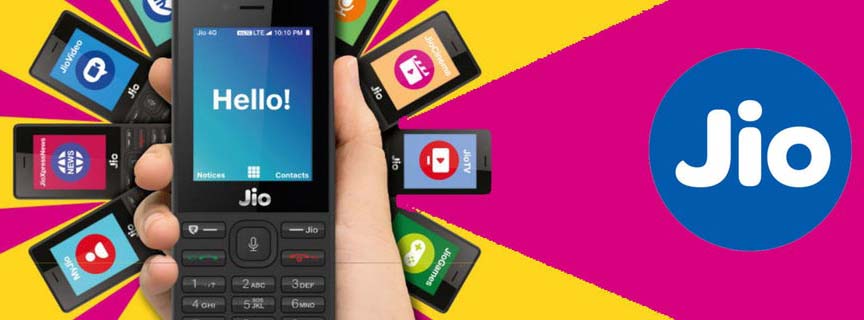Telecommunications and the digital experience platform
By Robert Merlicek October 21, 2017
- New forms of engagement with customers do not depend on telco mediation
- Telcos must constantly fight to keep up with the expectations of customers

 DIGITISATION is profoundly changing the competitive boundaries of the telecom industry. The days of the telcos’ autocratic monopoly control over their customers, when a phone connection seemed to be a privilege, are long gone.
DIGITISATION is profoundly changing the competitive boundaries of the telecom industry. The days of the telcos’ autocratic monopoly control over their customers, when a phone connection seemed to be a privilege, are long gone.
A fixed line at home was just that – a fixed line. There were no phone jacks to allow you to move the phone from room to room.
And as far as customer service is concerned, older subscribers may remember having to book overseas calls months in advance, waiting for the operator to connect them, and paying for the privilege.
The digital revolution gave consumers unparalleled access to an amazing array of services: both voice and data, via mobile and fixed line.
Social media has also opened up new communications channels beyond traditional voice service.
Today, telcos are inundated every day with millions of terabytes of digital information from multiple sources.
What is perhaps surprising is their failure to develop a business model that would integrate this vast volume of data, in order to capitalise on its value and generate multiple customer service offerings.
The digital telecommunications revolution
What is happening now is the next wave of the digital telecommunications revolution.
According to McKinsey, the traditional telco business model is under attack from two disruptive directions – the advent of new consumer touchpoints represented by devices based on the Internet of Things, and Over The Top (OTT) business models that obviate the need for the telcos’ role as a middleman.
A flood of data is now being generated by smart devices - watches, glasses and apparel, many related to health monitoring.
These technologies facilitate new forms of engagement with customers that do not depend on telco mediation.
We are also seeing an accelerating adoption of smart home technologies, measuring everything from the food we consume to our pattern of electricity use, and even analysis of the device’s own physical condition.
At the same time, OTT brands like Netflix are sitting comfortably on top of broadband and mobile platforms, moving customers away from traditional bundling like pay-per-view packages, and offering a far wider choice of product, and garnering twice the loyalty of their traditional telecom counterparts.
This greater convergence between the physical and digital and intensive data usage is presenting telcos with opportunities and challenges which demand a rethink in terms of the partner models and eco systems used.
Where previously, telcos could manage their channels as separate entities, today’s customers are constantly demanding changes like new rate plans, value-add services, better and faster connectivity, and popular mobile applications.
Telcos must constantly fight to keep up with the expectations of customers, and a lack of cohesion across various consumer touchpoints quickly undermine brand reputation and result in losing their customer base.
At the same time, the amount of data being generated by consumers through their mobile devices present a huge opportunity to understand their customers, improve operations and revolutionise the telco experience.
As millions of terabytes of digital information flow daily, capitalising on the value from big data can provide operators with the ability to access and integrate information from different customer and operational data sources and cover multiple services – from phone lines, broadband packages and other smart devices and streaming television offerings.
Urgent need to leverage on data
Telcos have the huge advantage of already holding a large customer base, the infrastructure in place and of being trusted. What they are not doing is capitalising on this existing trust by providing predictable and consistent customer interaction through all channels, transparently and securely.
Greater simplicity brought to the development and deployment of data analytics applications delivers insights at the moment of critical customer and employee decisions, enabling the accessible and continuous decision making needed to meet the expectations of the digital user.
Beyond that, these operators also have the capital to engage in data mining and predictive analytics to truly harness the power of the data being generated by their customers.
With such data visualisation, telcos are able to segment and identify different consumer profiles – empowering omni-channel engagement with customers.
To successfully execute an omni-channel strategy, operators need to evolve to become full service providers of the digital experience. How are they to do this?
Data analytics need to be developed and deployed to provide actionable insights at the very moment of critical customer and employee decisions, enabling seamless decision-making that meets the customer’s expectations.
Deploying analytics that facilitate such a 360-degree view will be key to driving innovation and maintaining a competitive advantage, enabling operators to exploit the split-second opportunity to up- or cross-sell or identify the risk of customer defection.
Such predictive analytics will sit alongside fraud detection that uses historic data to identify risky or abnormal behaviour exhibited by transactions, clients or suppliers.
This advanced and practical application of analytics works with live profiling of behaviour, real-time personalisation and closed loop monitoring, delivering to telco players a powerful, integrated and scaleable proposition for the digital experience platform, on which future offerings can be made to satisfied customers, newly loyal to the provider of their seamless telecom services.
Improving customer care
Identifying the potential for digital improvement in customer service, Reliance Jio has built a world-class ecosystem comprising of network, devices, applications and content, service experience, to become the most comprehensive provider of telecom and internet services across India.
With a high-complexity integration solution, Reliance Jio has enabled broad interconnections among systems and people, augmenting intelligence for unprecedented understanding and the ability to act quickly to customers’ needs.
Don’t be left behind
The well-known Telco 2020 prediction is that in that year the number of connected devices will rise to 50 billion.
By then, the sheer amount of data that operators will have access to is unprecedented – as well as the insights and intelligence embedded in this data.
While many telcos still heavily reliant on manual processes, the benefits of new technologies and innovations are forcing decision makers to drive digital transformation initiatives. To stay competitive and relevant in today’s market necessitates improvements in customer service, operational efficiencies and financial processes.

Digital disruptors such as Uber and AirBnb have used customer data to successfully redefine the markets in which they play – simply by using data to augment intelligence about their customers, and putting those insights to action.
Operators must move now to fully own and revolutionise how they interact with their customers and capitalise on their existing relationship, or risk the serious threat that looms beyond.
Robert Merlicek is chief technology officer for Asia Pacific and Japan at Tibco Software.
Related Stories:
Minimal financial impact on telcos from 700Mhz spectrum
Celcom trying to create a startup culture to regain its mojo
Analysts divided on telco M&As
For more technology news and the latest updates, follow us on Facebook,Twitter or LinkedIn.



